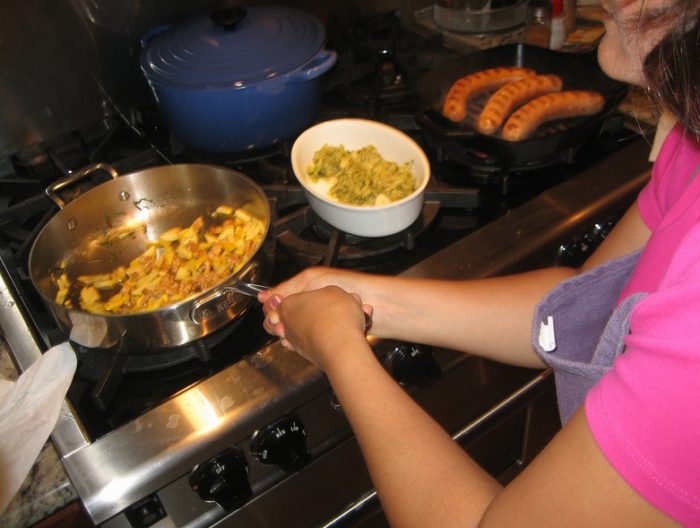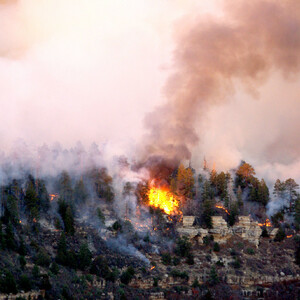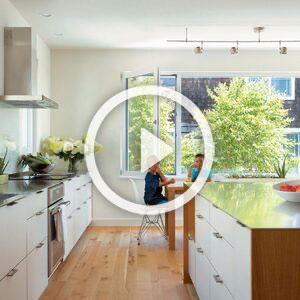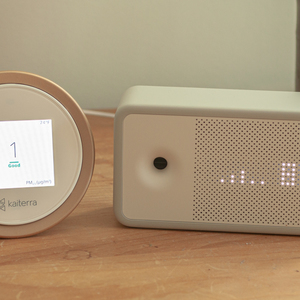
[Image Credit: Eugene Kim / Flickr]
Many owners of green homes are concerned about indoor air quality. GBA often receives questions from homeowners who worry that some building materials emit dangerous chemicals. For example:
- Will the glue in my plywood or OSB subfloor emit dangerous fumes?
- Will borate-treated cellulose insulation off-gas enough to affect the health of my children?
- What type of clothes dryer is best from the perspective of indoor air quality?
We do our best to provide answers to these questions. But if there is a theme running through these questions — and I think there is — it would be this: homeowners are worrying about the wrong materials and substances.
Occupant behavior matters more than construction specifications
Indoor air quality (IAQ) is a big topic. To get a handle on it, we need to break it down into small bites.
Here’s how I’d like to proceed:
- First, I’ll provide an overview of the issue.
- Then I’ll create three lists of substances that are worrisome. The first list will include worrisome substances that are only found in older houses. The second list will include worrisome substances arising from construction methods sometimes used in new homes. The third list will include worrisome substances that homeowners are exposed to because of occupant behavior.
- I’ll share a list of new home specifications that are important for anyone concerned about indoor air quality.
Finally, I’ll share researchers’ findings about which chemicals are most concerning.
Indoor air is low-quality air
In most U.S. locations, indoor air is more polluted than outdoor air. According to the American Society of Heating, Refrigerating, and Air-Conditioning Engineers (ASHRAE), “Studies from the Environmental Protection Agency on human exposure to air pollutants show that indoor levels of pollutants may be two to five times, sometimes more than 100 times, higher than…
Weekly Newsletter
Get building science and energy efficiency advice, plus special offers, in your inbox.

This article is only available to GBA Prime Members
Sign up for a free trial and get instant access to this article as well as GBA’s complete library of premium articles and construction details.
Start Free TrialAlready a member? Log in















14 Comments
Thanks!
This is a great summary. Building can be so overwhelming that it can be hard to gain perspective. This article provides the needed perspective, at least for this issue.
The only danger I see here is that raw foodists will delight in the condemnation of cooking. How long before you get a question from a raw-food devotee who wants help convincing a builder to go ahead with a range-free kitchen design? Oh, wait that already happened.
Response to Charlie Sullivan
Charlie,
Two protesters holding signs in front of a restaurant:
Organic food advocate: "Free-range chickens!"
Raw food advocate: "Range-free kitchens!"
Thanks
It's hard to keep up. I took CMHC sponsored Healthy Housing courses in the late 90s that emphasized the dangers of particle board and carpets. Good to know progress has been made.
There's really only one safe cooking method
Take out.
Dan
You've never done prep work in a restaurant.
Great overview
This is an excellent overview of an all-too-often overlooked topic.
Range Hood Vent
Great article, thanks Martin!
Somewhat off topic: My range hood is going to vent to the outside with a 7" rigid duct. The range is rated at 650 CFM. This is more than what I wanted but had a hard time finding a quality island hood with lower CFM's. They sell a CFM reducer to lower the rate of exhaust. Should I install it? What's the best back vent system for a horizontal duct to keep the cold air out in the winter: damper? Exterior vent only?
House is new construction, closed cell, HRV/ERV.
Any links or manufacturers would be appreciated.
Thanks is advance.
Peter
Response to Peter Whitman
Peter,
Most range hoods rated at 650 cfm actually exhaust about 50% (maybe 70%) of the nameplate rating once they are hooked up to ducts and one or more elbows. You might want to test the airflow on your unit after it is installed. What airflow rate are you aiming for? Does the range hood fan have several speed settings (low, medium, high)?
To keep cold weather out in the winter, make sure that the duct termination on your sidewall has a backflow damper.
Range hood vent option
Peter,
Many builders in Wisconsin have chosen to vent down and out the rim joist to successfully prevent cold air from entering the home through the backdraft damper located at the termination. The rationale is cold air will not travel up the vertical run to the range hood because cold air is heavier than the indoor air. Simple solution and very effective.
Response to Kevin Hogan
Kevin,
I hate to disappoint you, but the theory you present is mostly hogwash.
The relevant forces acting on the air in the duct are many, but the temperature of the air is probably the least important. The main relevant forces are the stack effect and wind (as well as pressurization and depressurization forces created by appliances in the house).
If the kitchen range hood is on the first floor of a two-story or three-story house, then the stack effect in winter might be depressurizing the kitchen with respect to the outdoors. This will tend to pull air into the range-hood duct (if the range hood fan isn't operating).
If the duct termination is located on the windward (as opposed to the leeward) side of the house, the wind forces will be pushing air into the the duct. This will be partially but not completely counteracted by the backdraft damper, which in no cases will be airtight.
The fact that outdoor air is cold does not prevent it from entering a house in winter. The driving force for this type of infiltration, as I said, is usually the stack effect or wind, but it can also be due to depressurization caused by a clothes dryer, a water heater, or a bathroom exhaust fan.
(zone 4c) In an air sealed house, is it sufficient to have something like the qufresh by airking (bringing in fresh air) coupled with electric heat. Am i missing anything for a good hvac setup? Im trying to plan all this right now as I do my siding...
An active ventilation fan such as that can be used for either supply-only or exhaust-only ventilation. In supply-only mode it's possible to know where the ventilation air is coming from. With exhaust-only, not so much- it's coming from wherever the leaks in the house are. With supply-only the house becomes pressurized, but the exfiltration paths are not known, which in some cases could become a moisture accumulation/rot issue in colder climates.
>"...coupled with electric heat. Am i missing anything for a good hvac setup?"
It depends on what is meant by "...electric heat...". Electric baseboards or electric hot air furnaces aren't very efficient, and can be quite expensive to run compared to heat pumps (ducted or ductless.)
Dana, you said, "With supply-only the house becomes pressurized, but the exfiltration paths are not known, which in some cases could become a moisture accumulation/rot issue in colder climates."
my question is, what if the exit paths are known. Could I just buy another qufresh and run that as exhaust? Or run my bath/range hood?
And Dana, about to your response regarding heat. They are similar to baseboard, they are envi heaters, http://www.eheat.com "stack convection technology"
What i was getting at with that question was if my house has no forced air, no heat pump, nothing fancy. Just a fresh air intake, and some exhaust throughout the home (see above), and envi heaters as my heat source (no AC) Is that a good enough set-up to be ok.
im trying to plan this all out now as I do my siding. want to make sure my initial idea was sufficient/not stupid. Or, if I should plan on/poke holes for eventually getting a ductless heat pump, hrv/erv, mini split, etc or something like it...
Kevin,
You will be heating your house with electric resistance heaters. This form of heat is cheap to install but expensive to operate. Dana Dorsett is correct: the operating cost of a ductless minisplit will be between 33% and 50% of the operating cost of electric resistance heat.
In theory, a ventilation system consisting of an exhaust fan and a supply fan, operating continuously, will work. The problems with this system are: (a) poor distribution -- it's hard to get fresh air to all of the rooms with that approach, and (b) high operating cost (because of the lack of heat recovery), and (c) the possibility that the installer won't be sure whether the system is delivering the right amount of fresh air, too much fresh air, or too little fresh air (although this problem can be solved if you know how to measure air flow rates).
For more information, see "Designing a Good Ventilation System."
Log in or become a member to post a comment.
Sign up Log in